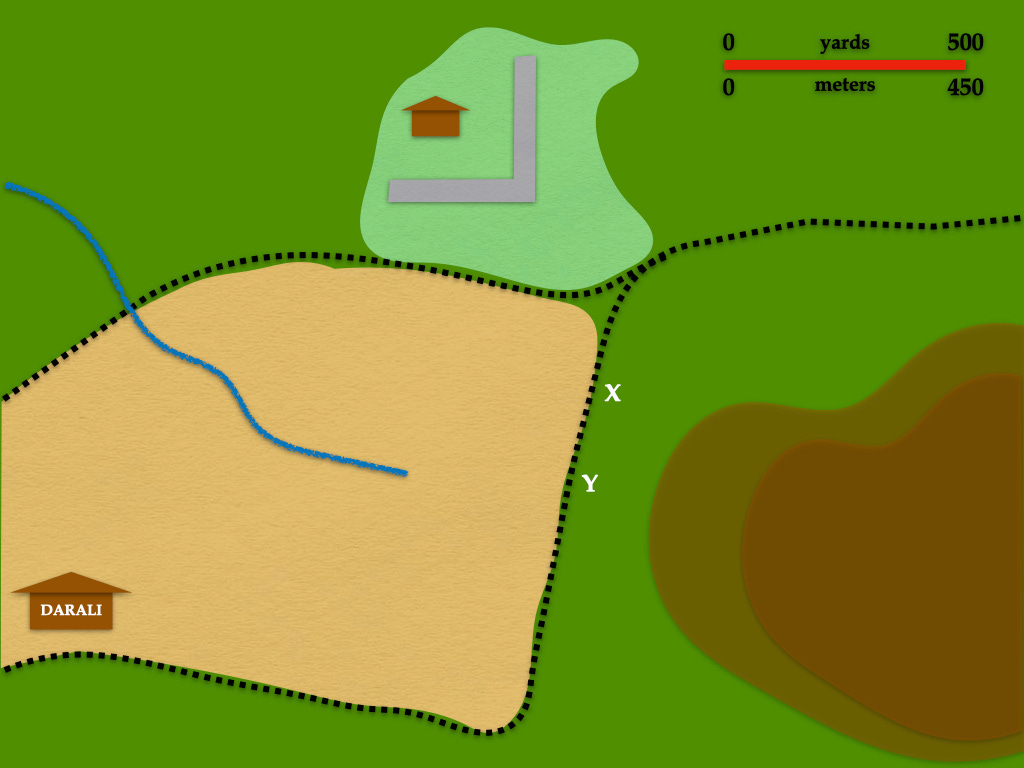Written by Lieutenant Harold D. Harris, USMC, this exercise appeared in Volume XI (January 1936) of the Infantry School Mailing List and Volume 21, Number 11 (November 1938) of The Leatherneck.
This is the conclusion of a multi-part exercise. If you have not done so already, you will probably want to begin at the beginning.
HISTORICAL SOLUTION
The captain moved along the line rapidly, instructed the rifle grenadiers on the left to lob grenades over the stone wall and to the area of X as fast as they could; the grenadiers on the right were told to smother the area of Y where the heaviest fire was coming from; all other weapons were directed to fire rapidly and at the captain's signal all men were to rush across the trail toward X and into the cover of the brush.
The improvised rifle grenade barrage accomplishes what rifle fire on a well-protected position could not. Bandit fire at the house, back of the stone wall, and near X ceases; the other fire slackens.
This is the moment for the rush, and the signal is given. As one man the patrol is up, dashing across the trail and up the slope. The bandits near X have fled. All the Marines are under cover of the brush without a casualty.
Immediately the patrol drove eastward, in an irregular line along the heights south of the trail. Hindered more by the dense undergrowth than by bandit fire, its progress was slow. But by noon they reached the sergeant's group.
Ammunition was redistributed and new heart was put into the survivors. The group then continued and shortly established contact with the third (rear-guard) squad. A division of the force was now made. Two squads under the lieutenant crossed the trail to the north side and moved west, while the remaining four squads paralleled the movement south of the trail.
Both groups gradually shouldered their way forward, maintaining contact and assisting each other by fire. Here again the fire power of the six squads, augmented as it was by the additional automatic weapons and the high-angle fire of rifle grenades, proved effective against some three hundred bandits. By three o'clock the Sandinistas had abandoned their position and gone for good.
The Marines had suffered 6 killed and 10 wounded; the Sandino force 12 killed and 25 wounded. The wounded were treated, and upon the arrival of additional Marines from Pueblo Nuevo about four o'clock, the force moved back to Condega.
It was learned later that the convoy patrol had been ambushed by Sandino's main army and that Sandino himself had been some five miles away during the action. The bandit force had been actively directed by that wily old Central American soldier of fortune, General [Manuel María] Jirón [Ruano].
This exercise serves neither as an argument for particular courses of action nor a criticism of decisions made in specific circumstances. Rather, it exists to give participants opportunities to immerse themselves in problems faced by a real person at some point in the past, and, in doing so, cultivate such martial virtues as decisiveness, critical thinking, creativity, situational awareness, and functional empathy.






